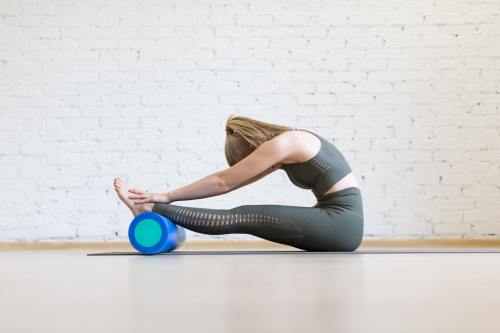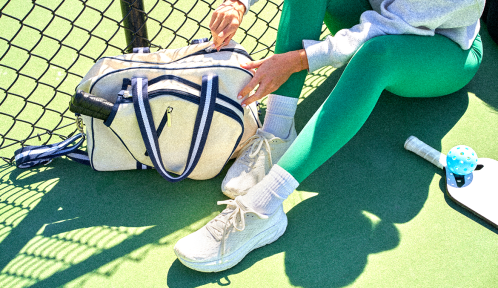Our editors independently select these products. Making a purchase through our links may earn Well+Good a commission
In 2019, recovery is king. We called it as one of the top trends of the year, and have been proven right time-and-time again with the rise of recovery technology, recovery studios, and even recovery workout-wear (excuse us while we pat ourselves on the back). And of course, the old-reliables like foam rollers and massage balls have become more pertinent than ever. But with so many different recovery-related options on the market—from fascia blasters that look like multi-tentacled octopi to foam rollers that can blast your favorite Drake song while melting your muscle tension—it can be Crossfit Games-level challenging to figure out what to actually use on your recovery days.
The first step in putting together a recovery gear wardrobe is to figure out what you’re looking to achieve. “The most important thing when it comes to recovery is to have a regular routine, so figure out which tool best fits your life, goals, and, to borrow from Marie Kondo, brings you the most joy. If you love the way you feel with one tool over another, you are much more likely to keep using it,” says Keren Day, DC, the founder and chief innovation officer of racked stretch. Start by evaluating what your issues are, whether it’s poor posture, tight muscles, stress, or something else, and find the tool that will give you the best bang for your buck in targeting those issues.
Here, the pros lay out exactly what you need to keep every muscle in your body happy—no matter how hard you’re going at the gym.
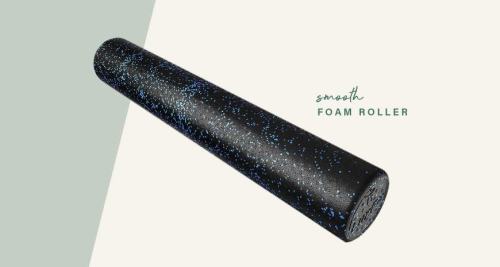
If you’re new to recovery tools, start with a smooth foam roller
For anyone who had never given “recovery” a second thought until the word was everywhere this year (#itme), a good, old-fashioned foam roller is a great place to start. “We’ve been trained to think ‘no pain, no gain’ but when it comes to foam rollers and other recovery tools this isn’t necessarily the case,” says Day, explaining that smooth foam rollers are less likely to cause pain or bruising than their textured counterparts. “Foam rollers increase blood circulation, bringing more oxygen to the muscles and those sore post-workout areas. They also break up surface-level knots and adhesions that can lead to more muscle flexibility.”

If you’ve got knots in your muscles, grab a textured foam roller
“The more textured the foam roller, the more intense the feeling,” says Margi Resch, NASM. She recommends wavy or textured foam rollers, like the one from Gaiam pictured above to target any knots in your muscles (otherwise known as myofascial trigger points) before your workout. The texture they help to stimulate blood flow in order to soothe muscles more quickly than the smooth rollers do, while also relieving tightness. “It’s important to release the trigger points before exercise by holding your body in position on the trigger point until you feel it release a little,” says Day, adding that you should go slowly, take deep breaths, and avoid going too hard with your massage method. “Once your trigger points are released your body will have a better length-tension relationship around each joint.” You can also reach for a wavy roller after your workout to flush out your tissues and relieve muscle soreness.

If you need to target smaller muscles, try a ball or peanut
Foam rollers can do a lot, but they’ve got certain limitations when it comes to targeting smaller areas. And that’s where peanuts and balls come in. “Peanuts and balls can be used to break up adhesions between the muscles and fascia, and are great for any areas of sensitivity—like your forearms, which have less muscle and fat protecting the bone—as they give you good control in terms of how much pressure you can apply,” says Day. As with the foam rolling, less is more in terms of pain, so don’t bring yourself to the point of bruising, because that can cause inflammation and in some cases even scar tissue, due to the repetitive stress, neither of which we want.
“I’m a Former Competitive Rower, and the Hydrow Rower Healed my Complicated Relationship with Indoor Rowing.”

Low Impact, High Reward: Why the Assault Air Bike is the Ultimate Cardio Workout You Should Definitely Try

Butter Yellow Is Taking Our Closets By Storm—Here’s How To Add It To Your Workout Wardrobe

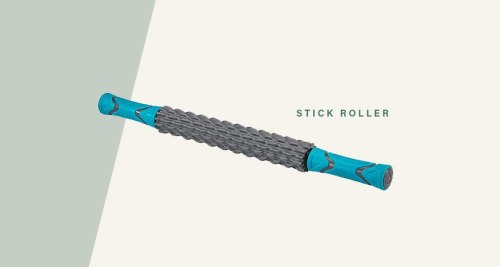
If you want an effective warm-up, go with a stick roller
While stick rollers may look like actual torture tools, they can help make your muscles feel damn good after a workout. They’re great to use pre-workout because help increase circulation and bring blood flow to the muscle. Day suggests building some time with your stick roller into your pre-workout regimen. “A quick five-minute roll leads to better performance in your workout,” she says. Who needs a massage therapist when you’ve got one of these babies?
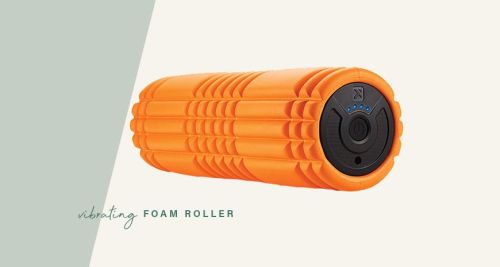
If your muscles are screaming, get a roller that vibrates
If your muscles need some major TLC, try one of these. “Vibration therapy has long been used to reduce pain, increase blood flow, and speed muscle fiber healing,” says Day. “The combination of the rolling and vibration can help curb the effects of delayed onset muscle soreness, which happens when your workout has led to tiny tears in your muscles. These tears weaken the muscles making you more susceptible to injury and decreasing your performance until they are healed.” Plus, since foam rolling sore muscles can be a—shall we say—less than pleasant experience, the vibrations will make it more bearable.
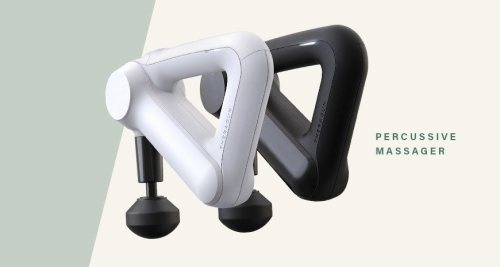
If you want a (fancy) tool that does it all, invest in a percussive massager
While spending hundreds of dollars on fancy recovery tools may not be in the cards for everyone (and certainly isn’t always necessary), there’s no doubt that they do the trick when it comes to soreness. “The great thing about these percussive tools is that they feel so amazing that it’s easy to make it part of your routine,” says Day. “They are perfect to use when it is too difficult to get on a roller due to injury, pain, soreness, or fatigue. You can also use them to quickly increase blood flow to your muscles before or after a workout.” But one thing to make sure of when you’re using a Theragun or Hyperice is that you’re using it right. “In my clinical experience I have seen vibratory therapy to be very powerful and healing, but it can just as easily do damage if it is used wrong, or too often or for too long.” says Day. Make sure you’re using the dampener on the muscle instead of the joints, tendons or ligaments, and move the tool around instead of spending too much time on one area.
If recovery isn’t a part of your routine, consider this lazy girl’s guide as the easiest way to get started. Just be sure to never, ever use the tool on this particular spot.
Sign up for the Well+Good SHOP Newsletter
Get exclusive deals on wellness, beauty, fitness, and food products that have been hand-picked by our editors.
Got it, you've been added to our email list.
